When I tried kishke for the first time a few weeks ago, I thoroughly enjoyed it. It added extra flavor to cholent, but that flavor and texture was kind of mysterious to me. My bowl scraped clean, I wondered, what is kishke, exactly?
To start with, there’s the history, which began in Eastern Europe, where people of all backgrounds there were making a blood sausage called kishke (Slavic and Yiddish for “guts’), or stuffed derma (German for “intestine”). Jewish communities made them kosher, of course, with onion, grain, and chicken or goose fat (schmaltz). This schmaltz-bound mixture was stuffed into kosher beef intestines, and baked in the Shabbat stew, cholent.
Kishke is ultimately the best way to turn vegetable scraps, chicken fat, and flour or matzah crumbs into something delicious and filling. The essence of kishke, then, might be resourcefulness — using every last bit of fat, flour, and vegetable to make something that tastes better than the sum of its parts.
What role can this stick-to-your-ribs food of a different era play, today?
The Nosher celebrates the traditions and recipes that have brought Jews together for centuries. Donate today to keep The Nosher's stories and recipes accessible to all.
I hoped the answer would reveal itself to me in the kitchen. Instead of making kishke with onions and matzah, I decided to use ingredients that I often have on hand in the colder months: sweet potatoes, onions, garlic and parsnips. Just like old-world kishke, my recipe is easy to customize. If you don’t have schmaltz, for example, you can use coconut oil.
And finally, after several rounds of recipe-testing, I discovered the answer to my kishke question. For me, it solves the problem of time — once you make it, it’s easy to store in the fridge for the rest of the week as a simple way to add flavor and substance to a lunch of soup or salad. When you’re at work with five hours left at your desk, you might need kishke with your kale to keep you going. In an era where time feels more scarce than food, kishke might just save the day.
Tools needed:
- parchment paper
- food processor or potato masher
Notes:
- You can make the kishke gluten-free by using a combination of oats, chickpea flour and almond meal (see recipe) instead of all-purpose flour.
- Store your kishke, unwrapped, in a Tupperware container in the fridge for up to 5 days. Enjoy with cholent, soup, or as a great topping for a hearty kale or mustard green salad throughout the week.
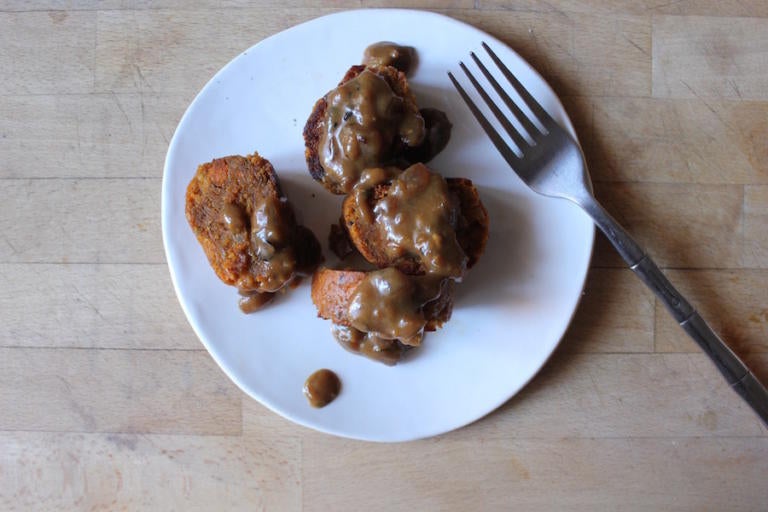
Sweet Potato Kishke and Gravy
Hearty, wholesome and packed with flavor.
- Total Time: 1 hour 25 minutes
- Yield: 2 loaves
Ingredients
- ½ onion, diced
- 1 stalk celery, sliced
- 1 ½ sweet potatoes, or 2 small sweet potatoes, cubed
- 1 small parsnip, sliced
- 3 cloves garlic
- 1 tsp black cumin seeds (nigella seeds) or 2 tsp ground cumin
- ½ cup coconut oil (or schmaltz or other oil of your choice), divided
- ½ cup oats, ground into a flour-like consistency
- ½ cup chickpea flour
- ½ cup almond meal or almond flour
- 1 Tbsp paprika
- 1 tsp kosher salt
- za’atar (optional)
- 2 Tbsp extra-virgin olive oil
- 1 large onion, diced finely
- 4 cloves of garlic, minced
- 2 cups of broth (vegetable or, if you prefer, chicken)
- 2 Tbsp Tamari or Bragg’s Amino Acids
- 1 Tbsp miso paste
- 6 Tbsp flour (gluten-free all-purpose flour works great)
- 2 tsp dried thyme
- 1 Tbsp shiitake mushroom powder (optional)
Instructions
- In a heavy bottomed skillet, heat 1/4 cup oil or schmaltz until it shimmers. Add diced onion and saute for 2 minutes, or until translucent. Add the rest of the vegetables and garlic and cumin, and saute for 10 minutes, or until sweet potatoes can be pierced easily. It’s ok if vegetables are slightly under-cooked, as we’ll bake them next.
- Remove the vegetable mixture from heat and let cool to room temperature.
- Preheat oven to 350°F.
- When vegetables are cooled, add to food processor, with the rest of the oil or schmaltz (1/2 cup), paprika and salt. Add oat flour, almond meal and chickpea flour (or your 11/2 cups all-purpose flour) to the food processor and blend until the consistency is thoroughly mixed. It’s ok if chunks of vegetables remain.
- Do not rinse out the pan — you’ll use it when making gravy, in a few minutes.
- Transfer half of the mixture onto a piece of parchment paper in a mound on one of the longer ends of the paper. Shape into a log with your hands (see photo below), and sprinkle it with seasoning if you want extra flavor (like paprika, salt or za’atar) and roll it in parchment paper. Set aside on a cookie sheet. Repeat this process with the rest of the mixture.
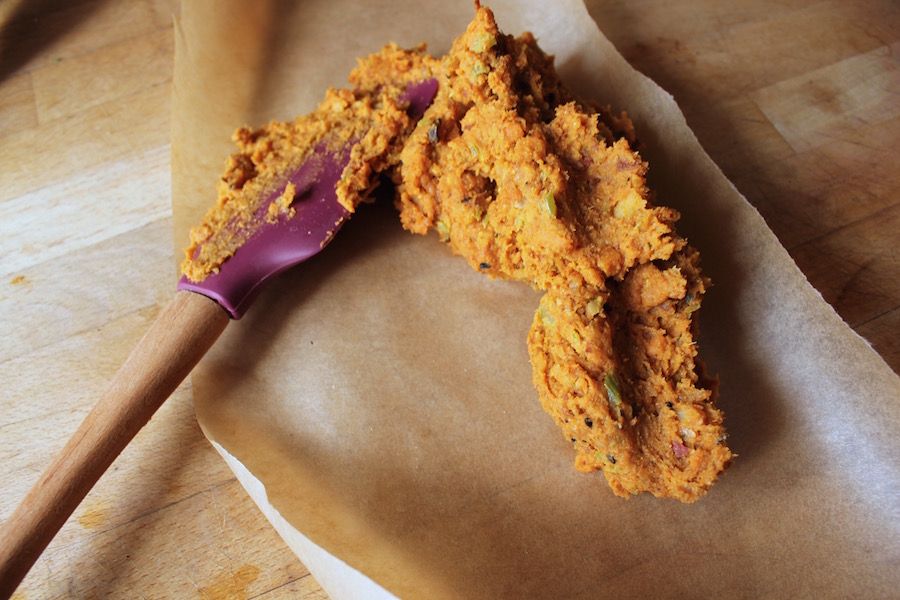
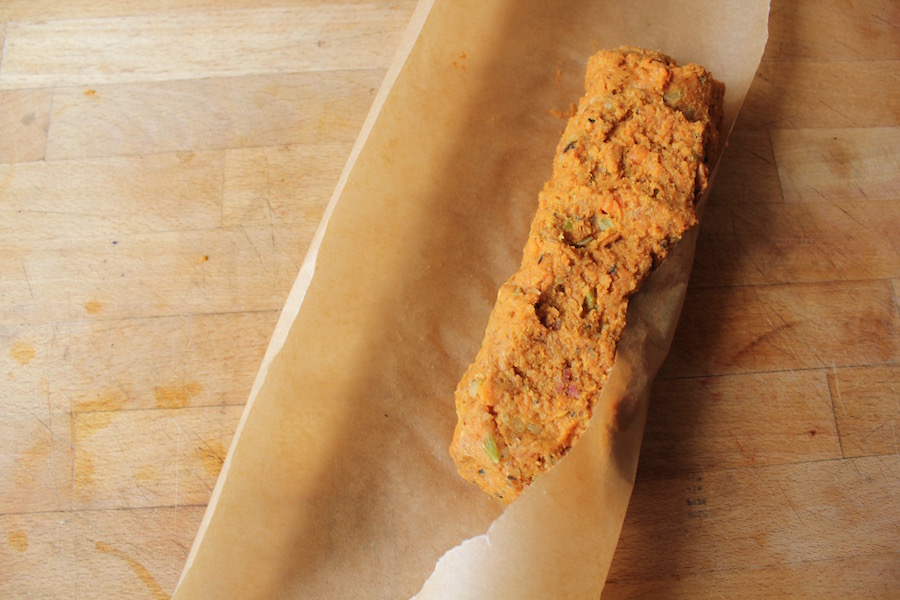
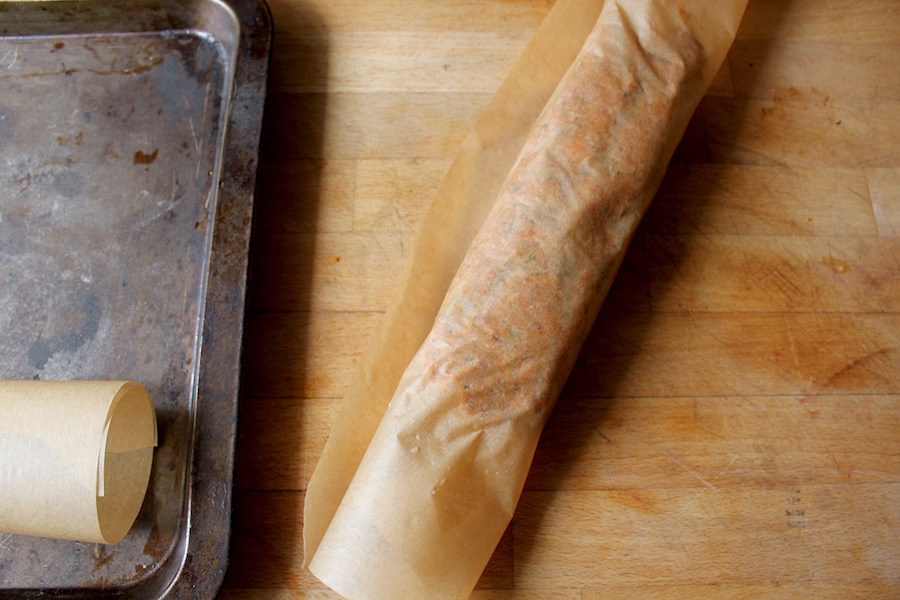
- Bake for 40-45 minutes.
- Meanwhile, make stovetop gravy. Add oil to the pan you sautéed vegetables in, and let heat. Then, add onion, and saute until translucent, for 2-3 minutes. Next, add garlic and broth, tamari and miso paste and stir to combine.
- Turn down the heat to medium-low and add flour, whisking the mixture quickly for 2-3 minutes, ensuring a thick texture without burning it. Add thyme and mushroom powder, if using. Stir and let cook for 2 more minutes. Set aside when it tastes to your liking.
- When you remove the kishke, it will appear too soft, but don’t worry — it will become firm as it cools. Without unwrapping the kishke, remove it from the cookie sheet and let cool for 20 minutes. Enjoy, topped with gravy.
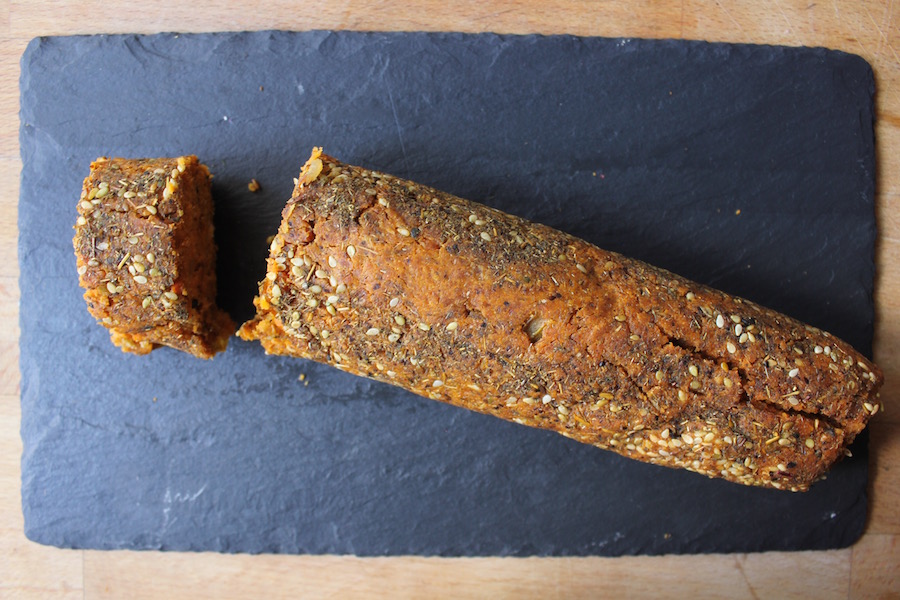
Notes
Store your kishke, unwrapped, in a Tupperware container in the fridge for up to 5 days. Enjoy with cholent, soup, or as a great topping for a hearty kale or mustard green salad throughout the week.
- Prep Time: 15 minutes
- Cook Time: 1 hour 10 minutes
- Category: Side dish
- Cuisine: Ashkenazi
4 comments
Leave a Comment
kishke
Pronounced: KISH-kuh, Origin: Yiddish, literally "intestine," this usually refers to a sausage-like dish. It's also used to connote a strong emotional connection to something, as in "I feel it in my kishkes."
kosher
Pronounced: KOH-sher, Origin: Hebrew, adhering to kashrut, the traditional Jewish dietary laws.
Shabbat
Pronounced: shuh-BAHT or shah-BAHT, Origin: Hebrew, the Sabbath, from sundown Friday to sundown Saturday.
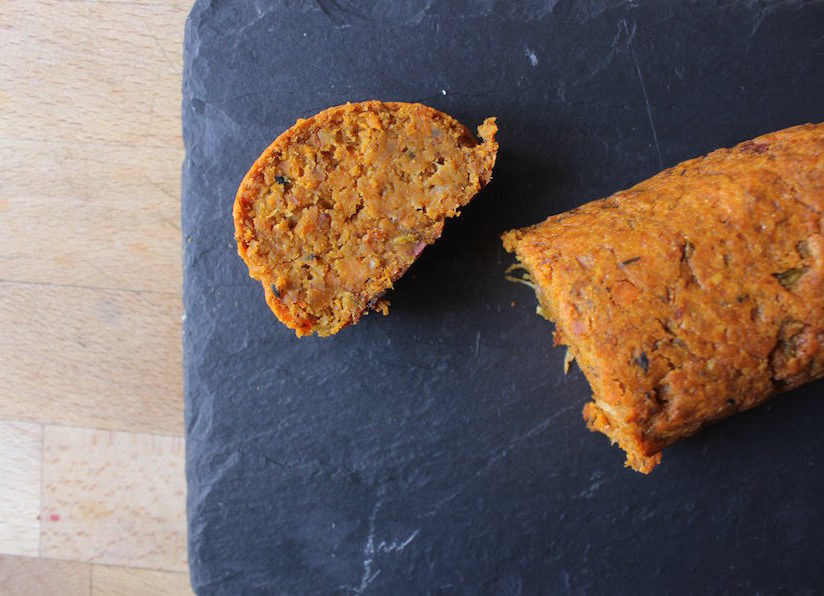
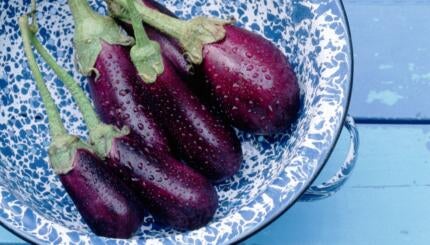
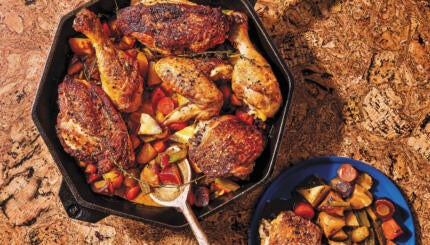
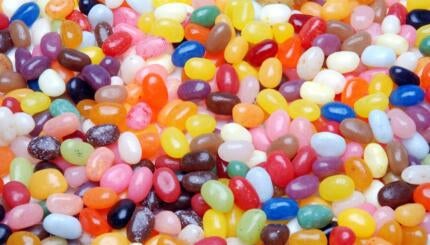
My bobbe made it with schmaltz, paprika garlic, black pepper, carrots and potatoes and matzo mael.
For years I’ve been making a kishke that’s made with carrots and cream of wheat. It’s excellent and so easy to make.
2 carrots
1 medium onion
1 cup flour
1/2 cup oil
1/2 cup cream of wheat
2 t Paprika
1 T Bouillon
1 t minced garlic
salt and pepper to taste
Process onions and carrots, add remaining ingrediets and continue to process until thorougly combined. Place processed ingredients in a parchment paper and bake for 1 hour at 375. Place baked roll in cholent or serve seperately with gravy.
How would you use it in a cholent? Would you put the parchment paper log in the pot and cook all night?
Yep! Enjoy!